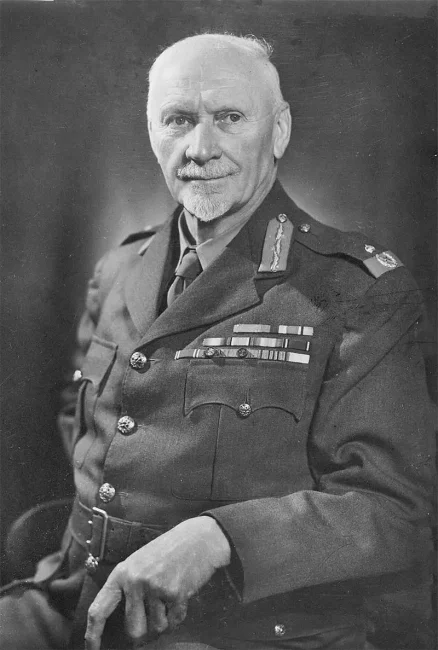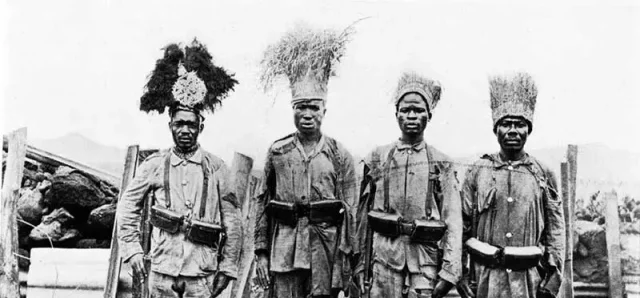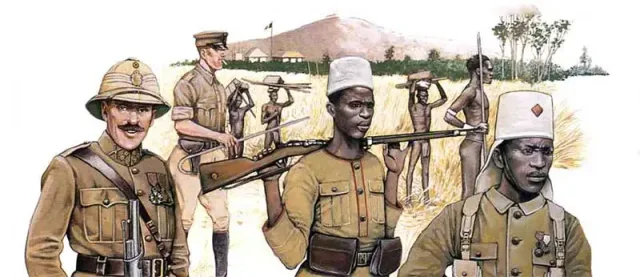- Military History
- Biographies
- Militarians Biographies
- Jan Christiaan Smuts
Jan Christiaan Smuts
Boer General, British Field Marshal and statesman
Smuts was born near Riebeeck West (near Malmesbury), Cape Colony on September 24, 1870. The son of a member of the colonial parliament, he was sent to school at 12, and four years later attended Victoria College at Stellenbosch. There he met his future wife Sybella (Isie) Krige. In 1891 he attended Cambridge, where he read for the Bar.
Smuts returned to South Africa in 1895 and practised as an advocate in Cape Town. Disgusted by the Jameson Raid (December 29, 1895 - January 2, 1896), he shifted his allegiance to Paul Kruger and the Afrikaaners; moved to Johannesburg in the Transvaal (1897) the same year he married Isie and they had two sons and four daughters.
Finally, Kruger appointed him 1898 as state attorney for the ZAR (Dutch: Zuid-Afrikaansche Republiek, Afrikaans: Suid-Afrikaanse Republiek - The South African Republic).
He remained in the Transvaal government until the fall of Pretoria (June 5, 1900), when he became a general; served at the battle of Diamond Hill (June 11-12) and led the Boer attack with De la Rey at Nooitgedacht/Magaliesburg (December 13); captured Modderfontein in Transvaal and massacred most of its native inhabitants (January 31, 1901). Determined to invade Cape Colony and hoping to foment rebellion among the Cape Colony Boers (June) he crossed into the Cape Colony (September 3), cut up the 17th Lancers at Elands River Poort (September 17), but subsequently was pressed hard by other British forces and received little material support from the Cape Boers.
Smuts attended the peace conference at Vereeniging (May 15-31), and signed the Treaty of Vereeniging (May 31, 1902). As a close political ally of Louis Botha, he became Colonial Secretary when Botha became Prime Minister of the Transvaal colony (March 1907); a principal drafter of the constitution (October 1908 - May 1909) of the Union of South Africa, enacted on May 31, 1910.
He suppressed the anti-British Boer uprising led by Christian De Wet (September-December 1914) and led South African forces in the conquest of German Southwest Africa (Namibia) from February to July in 1915. In February 1916, Smuts took command of operations in East Africa against the german Paul von Lettow-Vorbeck and overran most of German East Africa (Tanzania) within the year, but failed to destroy LettowVorbeck's army.
In 1917, Smuts took part in the Imperial War Conference in London and joined the war cabinet. He frequently visited the Western Front and his advice on the Turkish Front helped end the fighting in Palestine. After attending the 1919 Peace Conference at Versailles (where he voiced his reservations about German war reparations) he returned to South Africa where he became prime minister after the death of Gen Louis Botha.
His severity against miners during the 1922 strike ultimately led to much dissatisfaction. He then advocated his theory of 'Holism and Evolution'. He was leader of the opposition until the Gold Standard crisis of 1933, then became deputy prime minister under Hertzog after a coalition. When WWII broke out, Smuts became prime minister and minister of defense.
Smuts became an intimate collaborator with Winston Churchill. He also dealt with many internal problems. In May 1941, he was appointed a Field Marshal of the British army. His most important post-war achievement was the drafting of the covenant of the UN. He received great honors in Europe and the USA.
An adaptable man, Smuts was a talented and effective guerrilla leader, popular with his men; he was also an intelligent and farsighted politician and state leader; although he failed to defeat Lettow-Vorbeck, he reinvigorated the British war effort in East Africa; his broad outlook and support of the Commonwealth ultimately cost him the backing of the rural Afrikaaners and promoted the rise of Malan's Nationalists.
On the 29th of May 1950, a week after the public celebration of his eightieth birthday in Johannesburg and Pretoria, Fieldmarshal Jan Smuts suffered a coronary thrombosis. He died of a subsequent heart attack on his family farm of Doornkloof, near Pretoria, on the 11th of September, 1950.
Jan Christiaan Smuts - Quick Facts
- South African Republic - Transvaal (1852-1877 & 1881-1902)
- South Africa Transvaal Colony (1877-1881 & 1902-1910)
- Union of South Africa (1910-1961)
- Second Boer War (11 October 1899 – 31 May 1902)
- WWI (1914-1918)
- WWII (1939-1945)
- {{#owner}}
- {{#url}} {{#avatarSrc}}
{{name}} {{/url}} {{^url}} {{#avatar}} {{& avatar}} {{/avatar}} {{name}} {{/url}} - {{/owner}} {{#created}}
- {{created}} {{/created}}



























